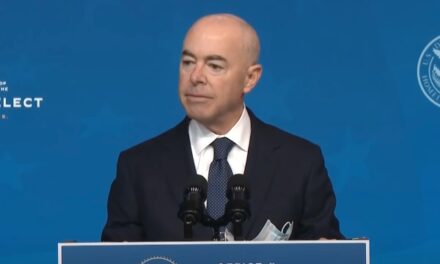We support our Publishers and Content Creators. You can view this story on their website by CLICKING HERE.
The National Aeronautics and Space Administration is planning to grow mushrooms on the moon – and maybe even the rest of the universe.
Exploring space, especially traveling to the moon, requires a lot of funding. It usually takes around $1 million just to get half a kilogram (1 pound) of material to the moon, and it costs more to transport materials to Mars.
It can also be dangerous. Spacefarers face several challenges, such as extreme pressure, temperature variations, deadly radiation and micrometeorites that fly through the void like bullets.
According to Chris Maurer, founder of Redhouse Architecture, it is difficult to send materials like boards or bricks to the moon. Redhouse Architecture is a Cleveland-based architecture firm that recently partnered with NASA to solve the problem of growing mushrooms in space.
Maurer added that it’s also expensive to transport already-built habitats. He explained that most researchers are considering a concept called In-Situ Resource Utilization (ISRU), which involves building with what is already on the moon.
If that is the case, the moon offers materials like water and regolith or “lunar dust.” Fortunately, these unusual materials can be fed to certain fungal species, which can then be turned into surprisingly tough building materials that are “stronger than concrete and come with an array of additional benefits.” (Related: Researchers develop a new technique for producing water on the moon.)
What is mycotecture?
The efforts to use mycotecture, or the Mycotecture Off Planet Structures at Destination project, has recently been awarded a Phase III contract with NASA, which means it will receive the funding necessary to continue.
And while the implications of this unusual mushroom technology are now astronomical, the creation of the material itself is rather straightforward. Mycotecture, or the use of fungal-based materials for constructive purposes, has been explored in recent years.
Mycotecture has been used in art, buildings and for “biocycling” waste. Redhouse has already been experimenting with using mycotecture to solve challenges on Earth, such as using mycomaterials to build housing and growing edible mushrooms to address food scarcity.
Once Lynn Rothschild, a NASA astrobiologist and project leader, learned of these and other myco-efforts, she realized that they had potential applications for space exploration.
Since then, mycotechnology has gained the support of prominent NASA figures such as geologist Jim Head, who once trained astronauts for the Apollo lunar exploration program. David Scott, an Apollo 15 commander and one of only 12 people to ever walk on the moon, also supports the use of mycotechnology.
Maurer’s Redhouse team produces myco “bricks” by feeding organic matter from plants or construction waste to different fungal species. The material produced is then heated and compacted into blocks that are more resilient compared to concrete.
The bricks are also better for the environment. However, the strength of the fungi bricks becomes irrelevant when it comes to space, said Maurer. He explained that material integrity becomes less important on the moon or Mars because “gravity is much less and the building forces are going to be outwards because you’re in a pressurized vessel.”
According to Maurer, instead of gravity pushing down on the building, the air is pushing out so there’s no need for “a good material for compressive strength.” Instead, you need good material for tensile strength that can hold that pressure. In other words, buildings fall “out” in space, not down.
Experts plan to start with an inflatable mold where mycomaterial can be grown using a combination of Earth-sourced fungal spores and algae, which will then feed off the water and regolith already on the moon.
Doing so means you can use living biology and nutrients, said Maurer. Next, you can add more water from subsurface ice on the moon. This makes up at least 90 percent of the mass of the final building, and it’s ideal because you can source most of the material on the moon itself, eliminating the need to transport heavy materials from Earth.
NASA said this was a great benefit because it helped the agency save “trillions of dollars.” However, NASA can only confirm the effectivity of the material once the first full-scale structures are placed on the moon.
But building moon structures from fungi bricks is still at least a decade off. For now, the project is focusing on sending proof-of-concept models with the Starlab space station, which is slated to launch in 2028.
Fungi are ideal for lunar colonization
Jonathan Dessi-Olive, an assistant professor at the David R. Ravin School of Architecture and University of North Carolina at Charlotte and director of the MycoMatters Lab, said that fungi bricks seem like an invention straight out of science non-fiction.
“They’re doing real biology to imagine a potential future,” added Dessi-Olive.
Dessi-Olive also agrees that the self-propagation and radiation-shielding qualities make fungi ideal for colonizing the low-resource and high-radiation landscapes of the moon and Mars. When asked about the NASA project, he said that it is exciting since researchers are studying structures that can “cultivate on their own through multi-organism cooperation.”
Visit Space.news for more stories about unusual attempts to colonize space.
Watch this clip about NASA and how the agency sent the Starliner spacecraft back to Earth without astronauts due to safety concerns.
This video is from the TrendingNews channel on Brighteon.com.
More related stories:
Strange source of water on the moon connected to Earth’s magnetic shield.
Stranded NASA astronauts face difficulties in space as they wait to be rescued in February 2025.
Space debris from satellite traffic now a larger threat to humanity than plastic pollution.
SPACE TOURISM: First space hotel to begin construction in 2025.
Sources include:
Aljazeera.com
NYPost.com
NASA.gov
Brighteon.com
NASA plans to grow mushrooms on the moon to build structures that humans are supposed to occupy one day
The National Aeronautics and Space Administration is planning to grow mushrooms on the moon – and maybe even the rest of the universe.
Exploring space, especially traveling to the moon, requires a lot of funding. It usually takes around $1 million just to get half a kilogram (1 pound) of material to the moon, and it costs more to transport materials to Mars.
It can also be dangerous. Spacefarers face several challenges, such as extreme pressure, temperature variations, deadly radiation and micrometeorites that fly through the void like bullets.
According to Chris Maurer, founder of Redhouse Architecture, it is difficult to send materials like boards or bricks to the moon. Redhouse Architecture is a Cleveland-based architecture firm that recently partnered with NASA to solve the problem of growing mushrooms in space.
Maurer added that it’s also expensive to transport already-built habitats. He explained that most researchers are considering a concept called In-Situ Resource Utilization (ISRU), which involves building with what is already on the moon.
If that is the case, the moon offers materials like water and regolith or “lunar dust.” Fortunately, these unusual materials can be fed to certain fungal species, which can then be turned into surprisingly tough building materials that are “stronger than concrete and come with an array of additional benefits.” (Related: Researchers develop a new technique for producing water on the moon.)
What is mycotecture?
The efforts to use mycotecture, or the Mycotecture Off Planet Structures at Destination project, has recently been awarded a Phase III contract with NASA, which means it will receive the funding necessary to continue.
And while the implications of this unusual mushroom technology are now astronomical, the creation of the material itself is rather straightforward. Mycotecture, or the use of fungal-based materials for constructive purposes, has been explored in recent years.
Mycotecture has been used in art, buildings and for “biocycling” waste. Redhouse has already been experimenting with using mycotecture to solve challenges on Earth, such as using mycomaterials to build housing and growing edible mushrooms to address food scarcity.
Once Lynn Rothschild, a NASA astrobiologist and project leader, learned of these and other myco-efforts, she realized that they had potential applications for space exploration.
Since then, mycotechnology has gained the support of prominent NASA figures such as geologist Jim Head, who once trained astronauts for the Apollo lunar exploration program. David Scott, an Apollo 15 commander and one of only 12 people to ever walk on the moon, also supports the use of mycotechnology.
Maurer’s Redhouse team produces myco “bricks” by feeding organic matter from plants or construction waste to different fungal species. The material produced is then heated and compacted into blocks that are more resilient compared to concrete.
The bricks are also better for the environment. However, the strength of the fungi bricks becomes irrelevant when it comes to space, said Maurer. He explained that material integrity becomes less important on the moon or Mars because “gravity is much less and the building forces are going to be outwards because you’re in a pressurized vessel.”
According to Maurer, instead of gravity pushing down on the building, the air is pushing out so there’s no need for “a good material for compressive strength.” Instead, you need good material for tensile strength that can hold that pressure. In other words, buildings fall “out” in space, not down.
Experts plan to start with an inflatable mold where mycomaterial can be grown using a combination of Earth-sourced fungal spores and algae, which will then feed off the water and regolith already on the moon.
Doing so means you can use living biology and nutrients, said Maurer. Next, you can add more water from subsurface ice on the moon. This makes up at least 90 percent of the mass of the final building, and it’s ideal because you can source most of the material on the moon itself, eliminating the need to transport heavy materials from Earth.
NASA said this was a great benefit because it helped the agency save “trillions of dollars.” However, NASA can only confirm the effectivity of the material once the first full-scale structures are placed on the moon.
But building moon structures from fungi bricks is still at least a decade off. For now, the project is focusing on sending proof-of-concept models with the Starlab space station, which is slated to launch in 2028.
Fungi are ideal for lunar colonization
Jonathan Dessi-Olive, an assistant professor at the David R. Ravin School of Architecture and University of North Carolina at Charlotte and director of the MycoMatters Lab, said that fungi bricks seem like an invention straight out of science non-fiction.
“They’re doing real biology to imagine a potential future,” added Dessi-Olive.
Dessi-Olive also agrees that the self-propagation and radiation-shielding qualities make fungi ideal for colonizing the low-resource and high-radiation landscapes of the moon and Mars. When asked about the NASA project, he said that it is exciting since researchers are studying structures that can “cultivate on their own through multi-organism cooperation.”
Visit Space.news for more stories about unusual attempts to colonize space.
Watch this clip about NASA and how the agency sent the Starliner spacecraft back to Earth without astronauts due to safety concerns.
This video is from the TrendingNews channel on Brighteon.com.
More related stories:
Strange source of water on the moon connected to Earth’s magnetic shield.
Stranded NASA astronauts face difficulties in space as they wait to be rescued in February 2025.
Space debris from satellite traffic now a larger threat to humanity than plastic pollution.
SPACE TOURISM: First space hotel to begin construction in 2025.
Sources include:
Aljazeera.com
NYPost.com
NASA.gov
Brighteon.com

 Conservative
Conservative  Search
Search Trending
Trending Current News
Current News 





